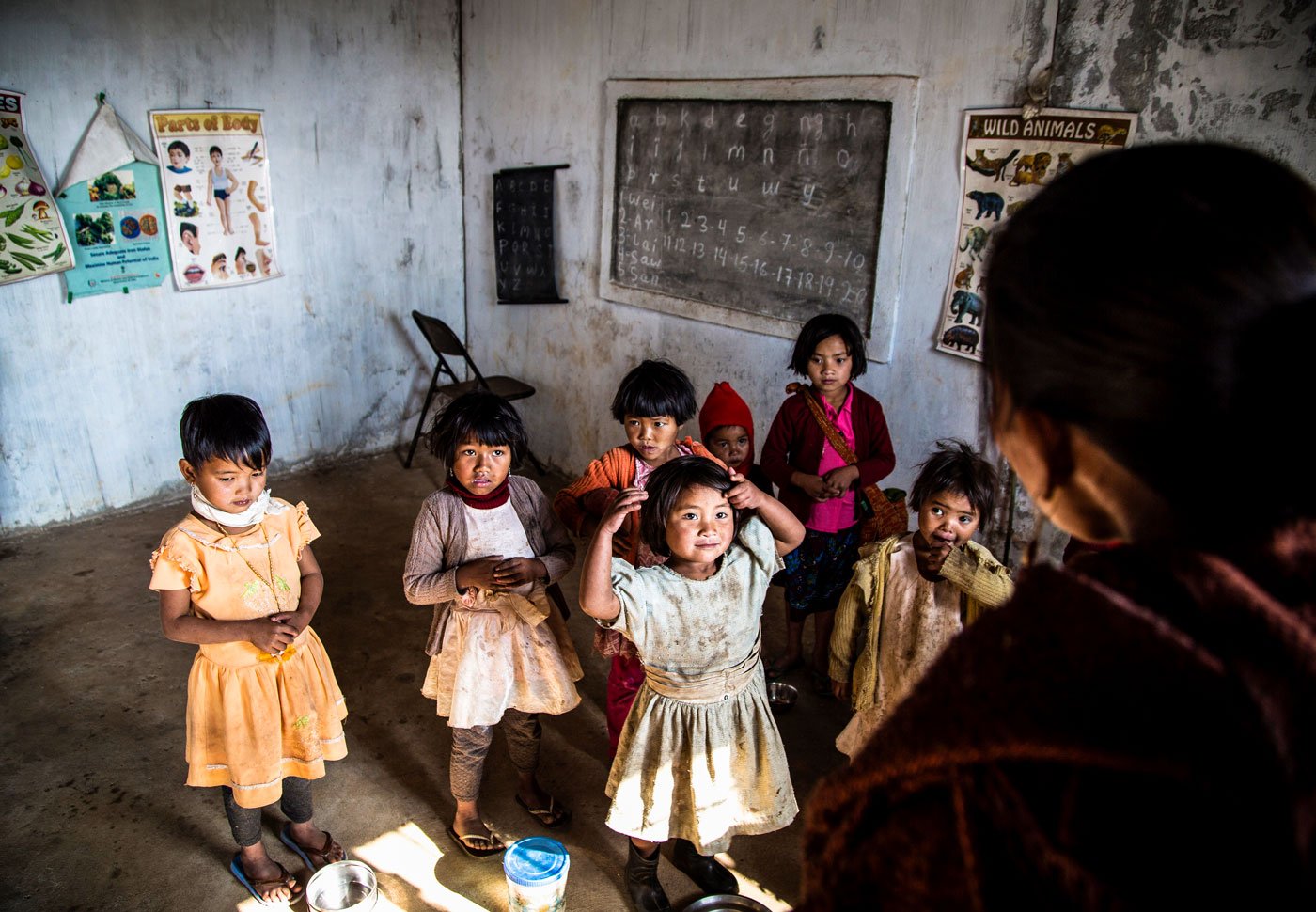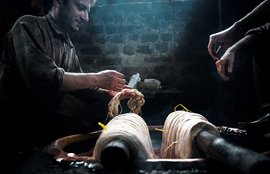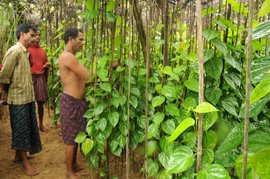Kynja Babha is a five-year-old girl in the faraway village of Khrang in the East Khasi Hills district of Meghalaya. She is the daughter of a broom cultivator, from a below poverty line (BPL) family. Her father has a small farm down the slopes on the edge of the village.
Kynja has three sisters and one brother – she is the third child. She studies in the nursery class at the anganwadi centre in Khrang, implemented under the Integrated Child Development Services scheme of the government of India. The 15-year-old anganwadi is run by a single teacher, Teresa Shabong, for the last seven years.
Attired in a torn frock and oversized gum-boots, Kynja spends a day at the
anganwadi
centre
.
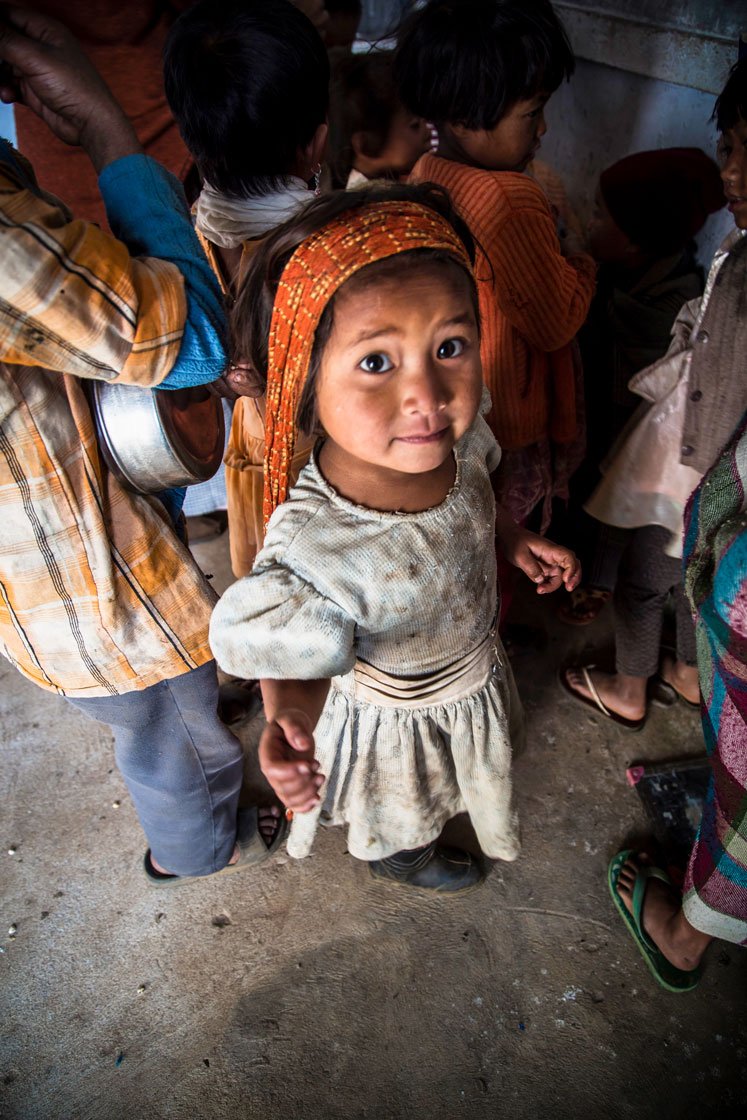
Kynja arrives at the anganwadi with an orange-coloured bag strapped over her head. In the bag, she has a slate to write on and a steel plate for her mid-day meal.
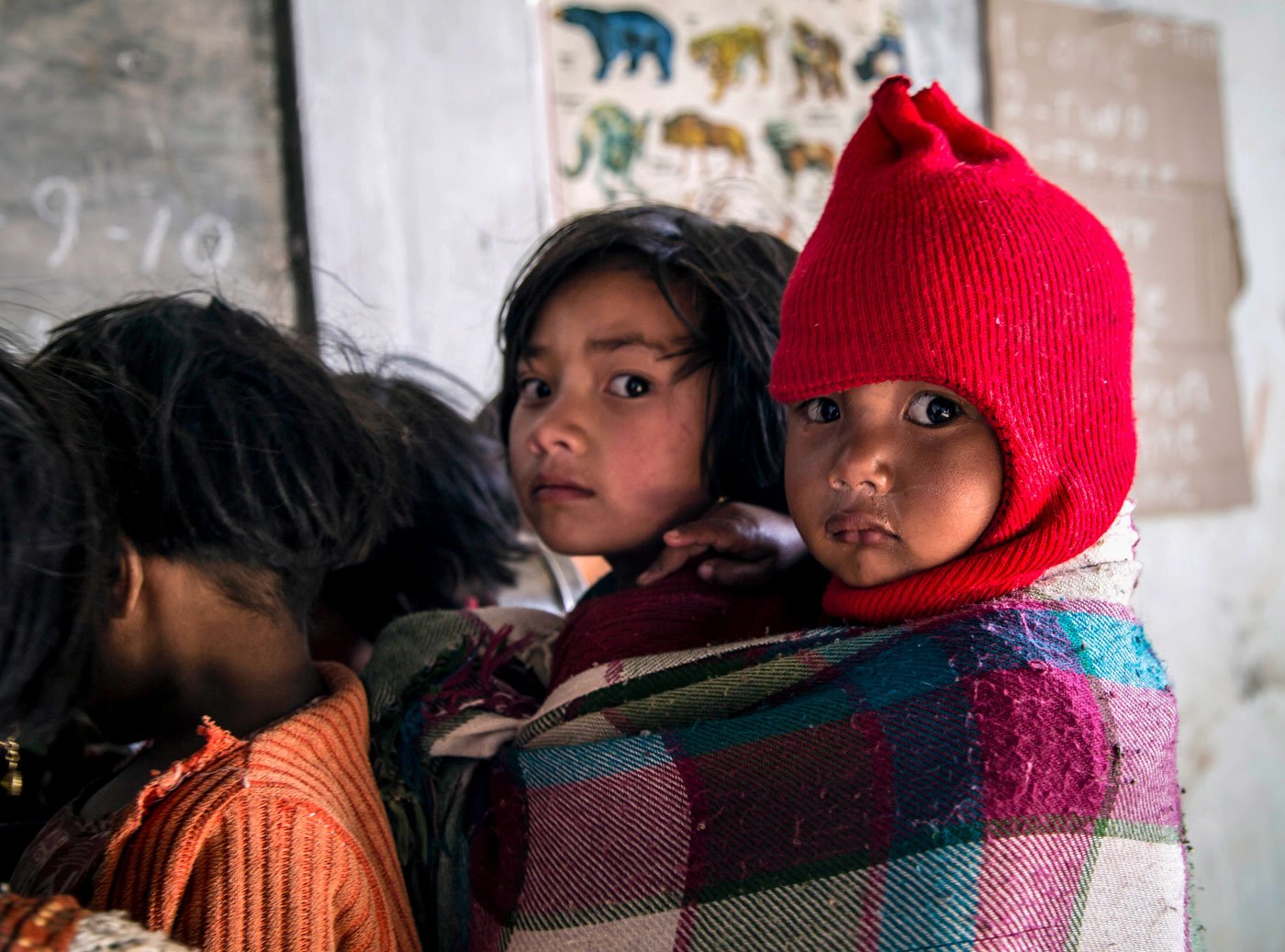
Kynja’s friend carries in her little brother to attend the anganwadi classes
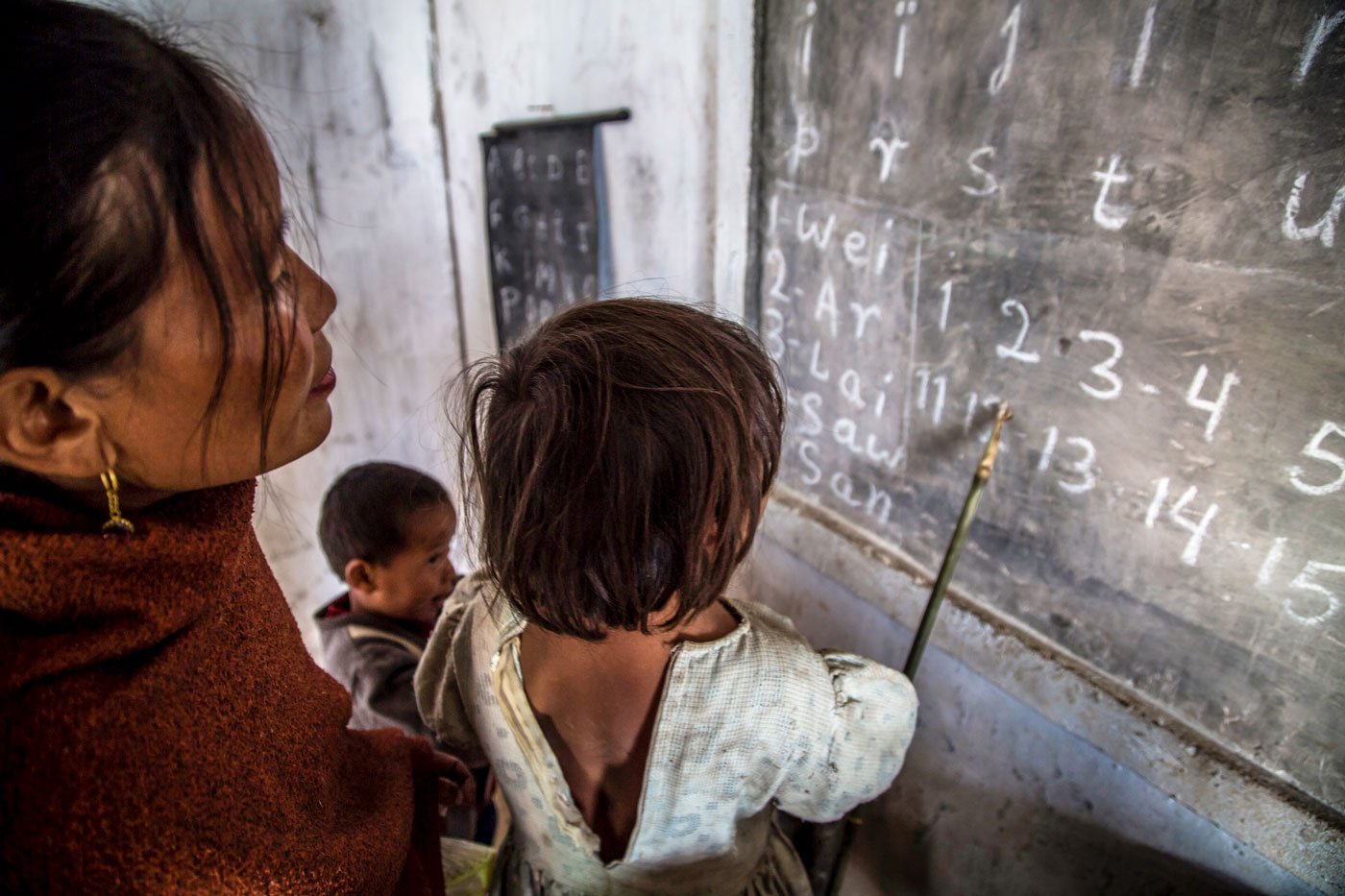
The teacher, Teresa Shabong, has written the Khasi numerals and alphabet on the blackboard. She watches with pride as Kynja, her brightest student, reads them aloud
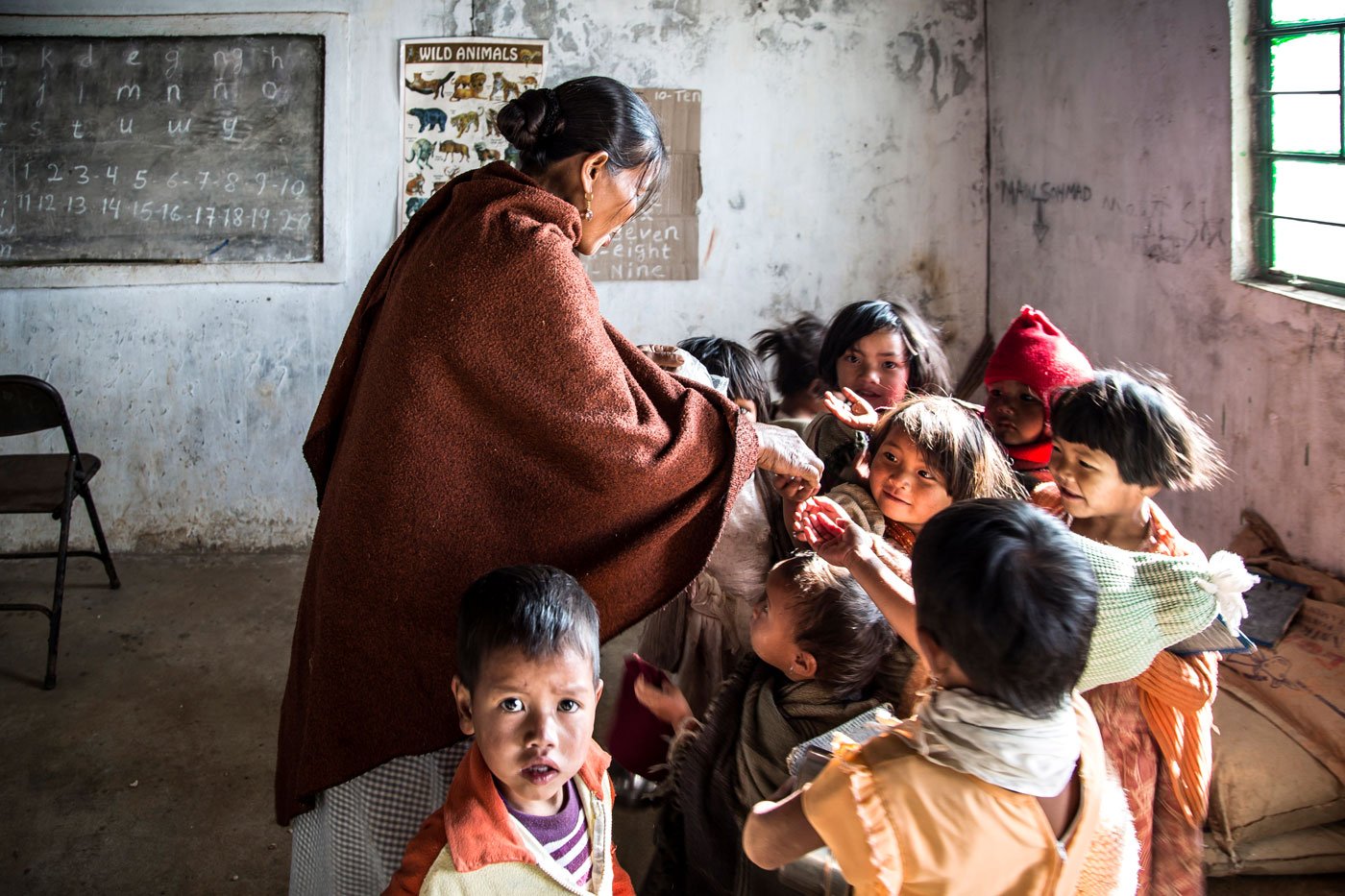
Teacher Teresa distributes pieces of chalk to the children for their classwork

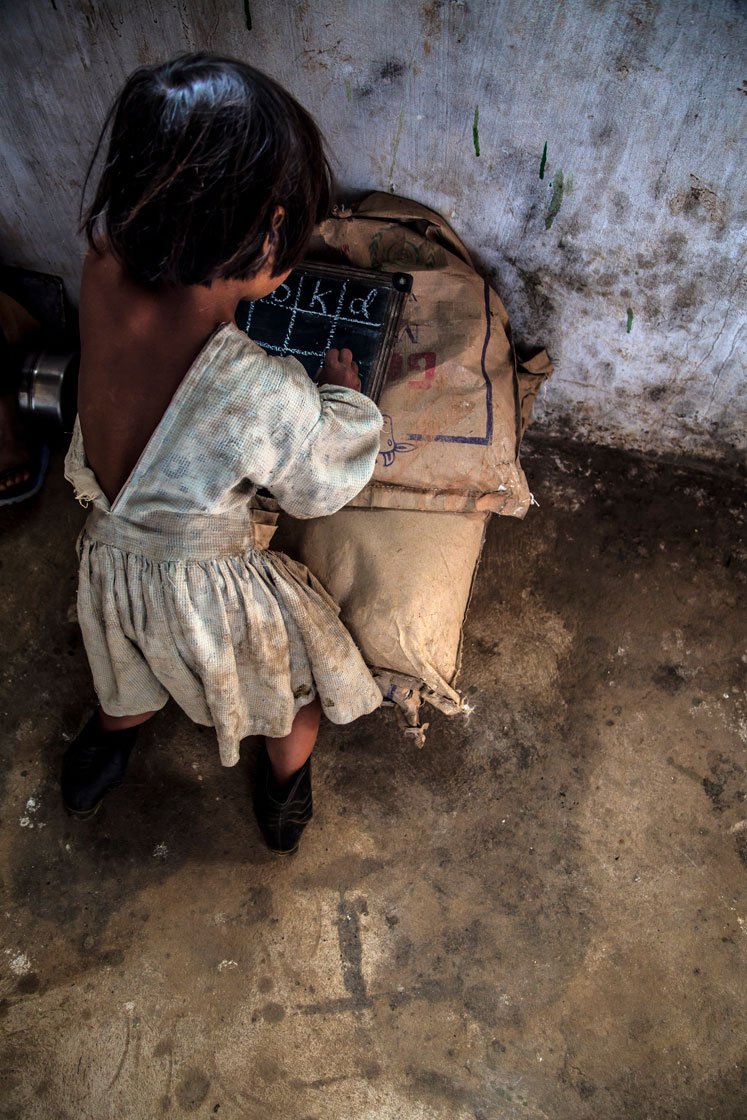
Sitting all by herself in a corner of the classroom, Kynja does her work rapidly
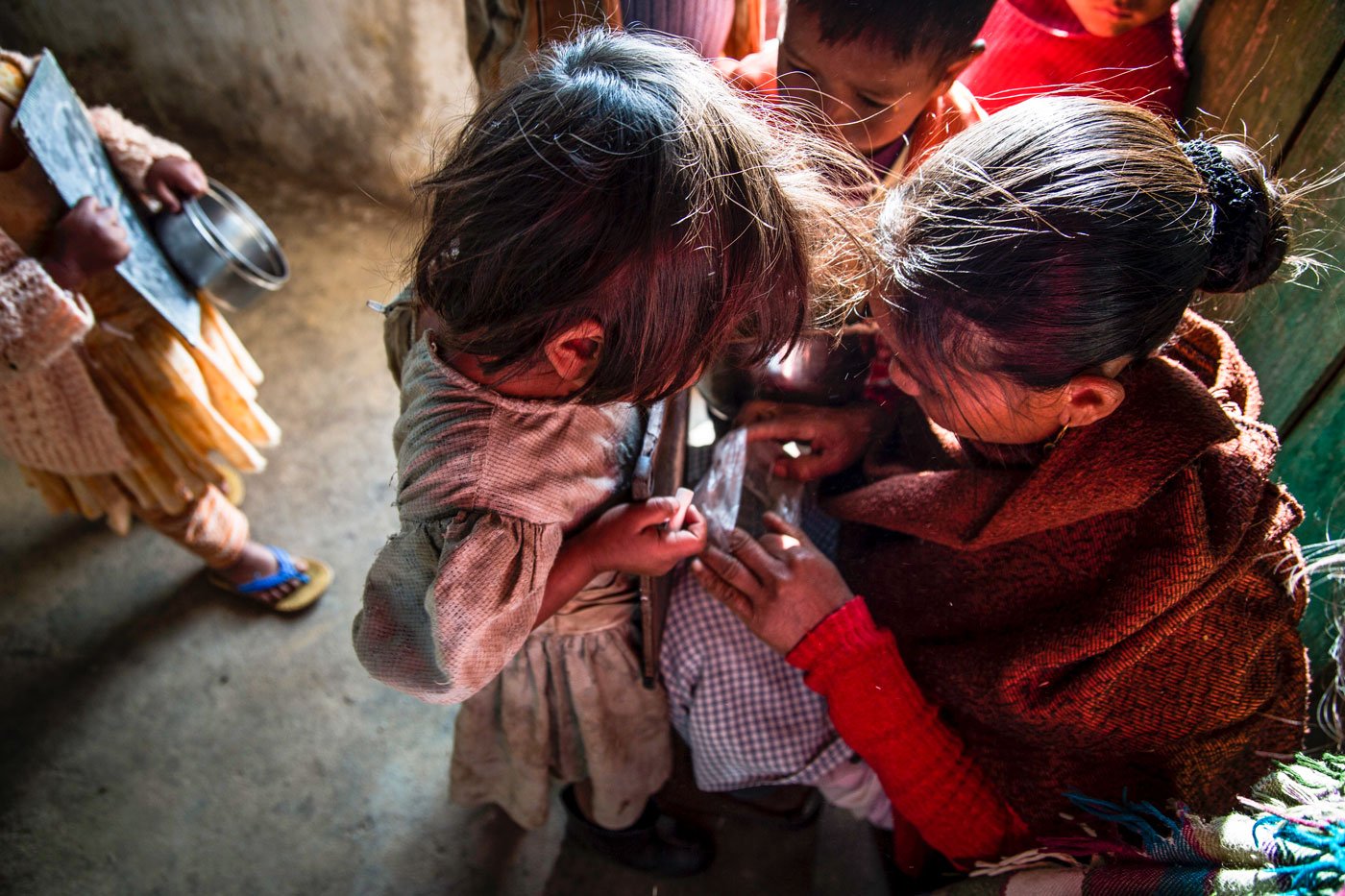
Kynja is the first in class to run to the teacher to show what she has written on the slate
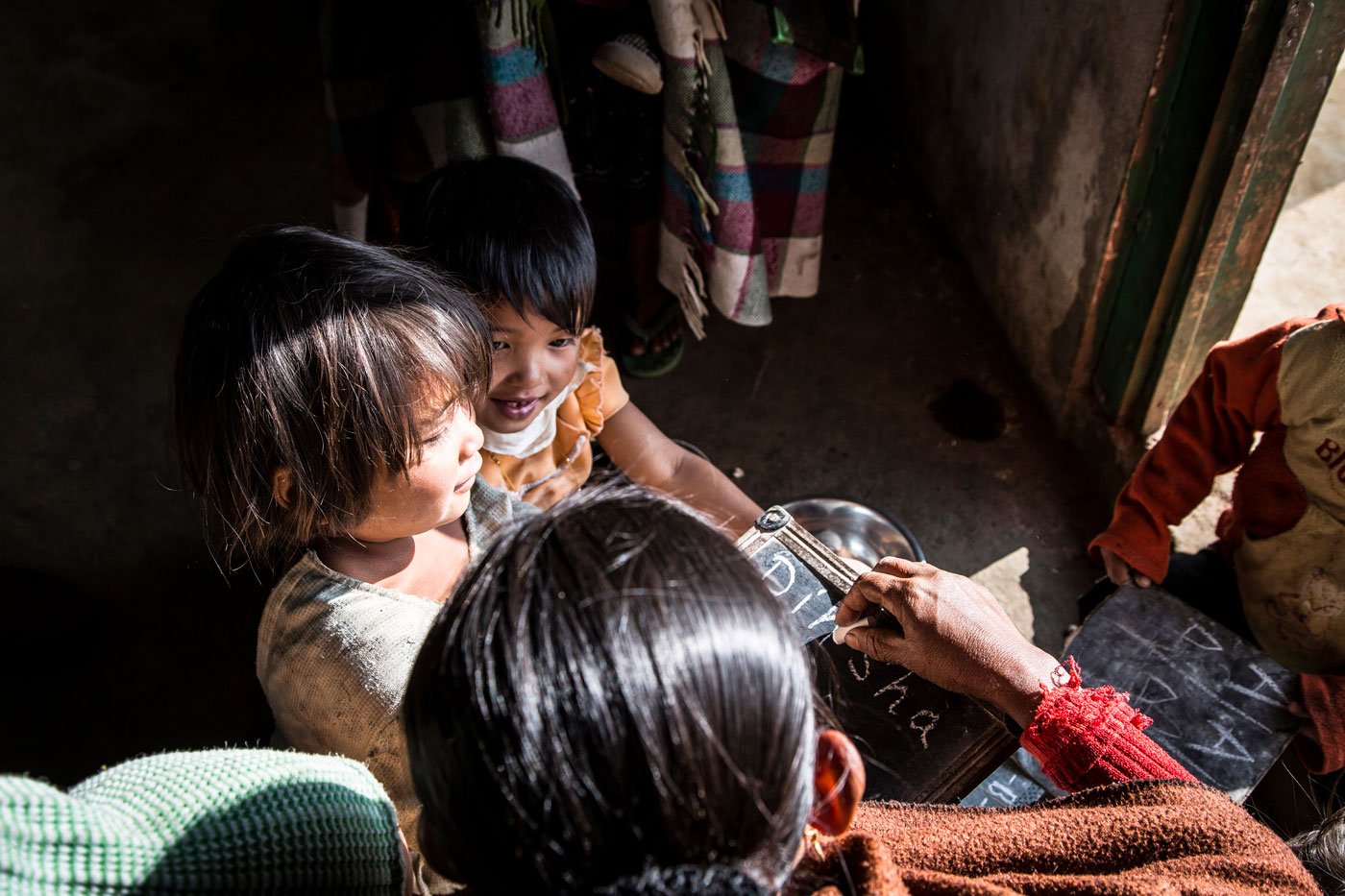
Teresa teaches Kynja a new word
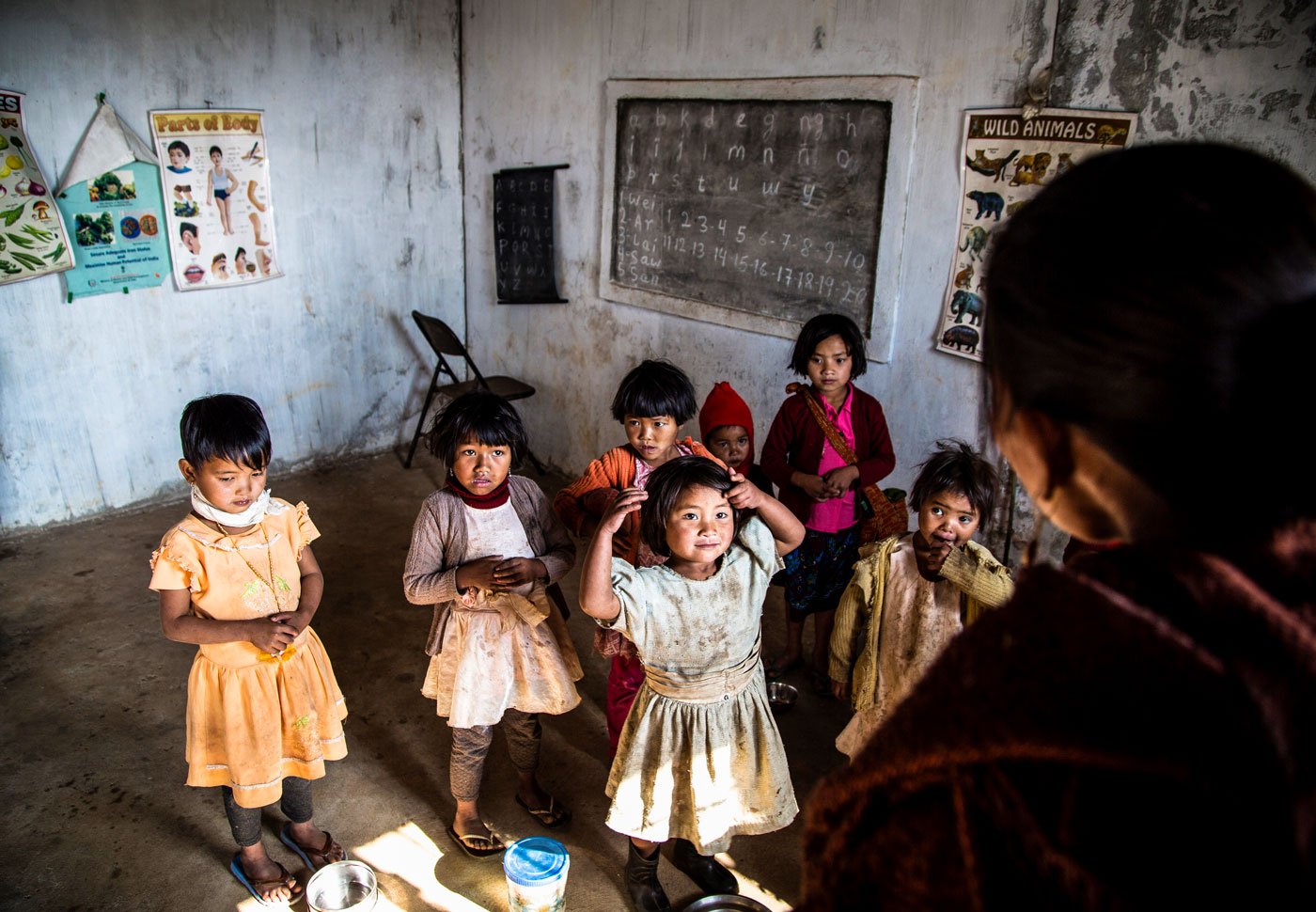
The teacher asks the children to recite a rhyme; Kynja leads the group

Helped by her teacher, Kynja washes her hands before the mid-day meal is served
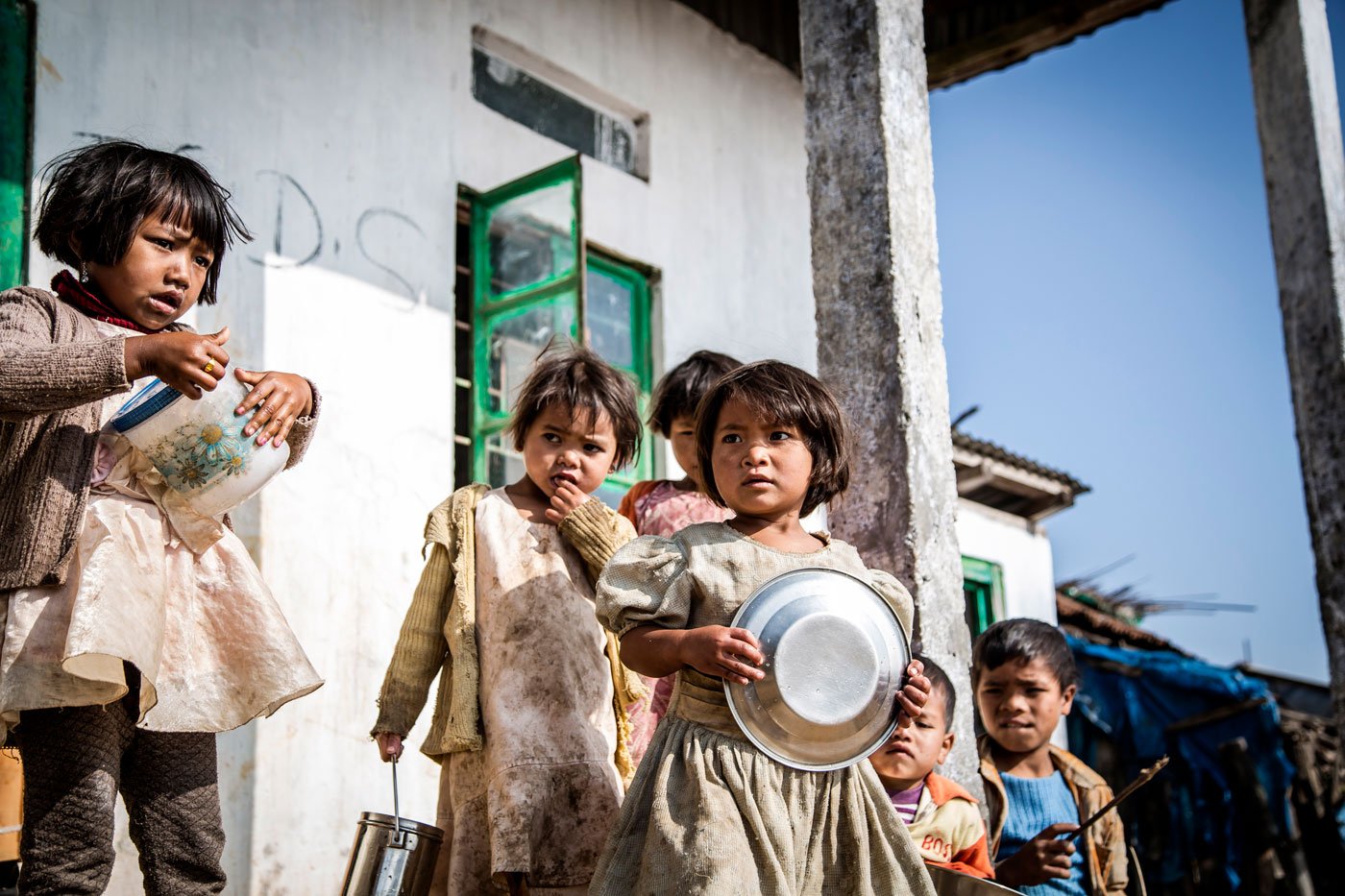
Kynja is very hungry: 'Why aren’t they washing their hands quickly?'
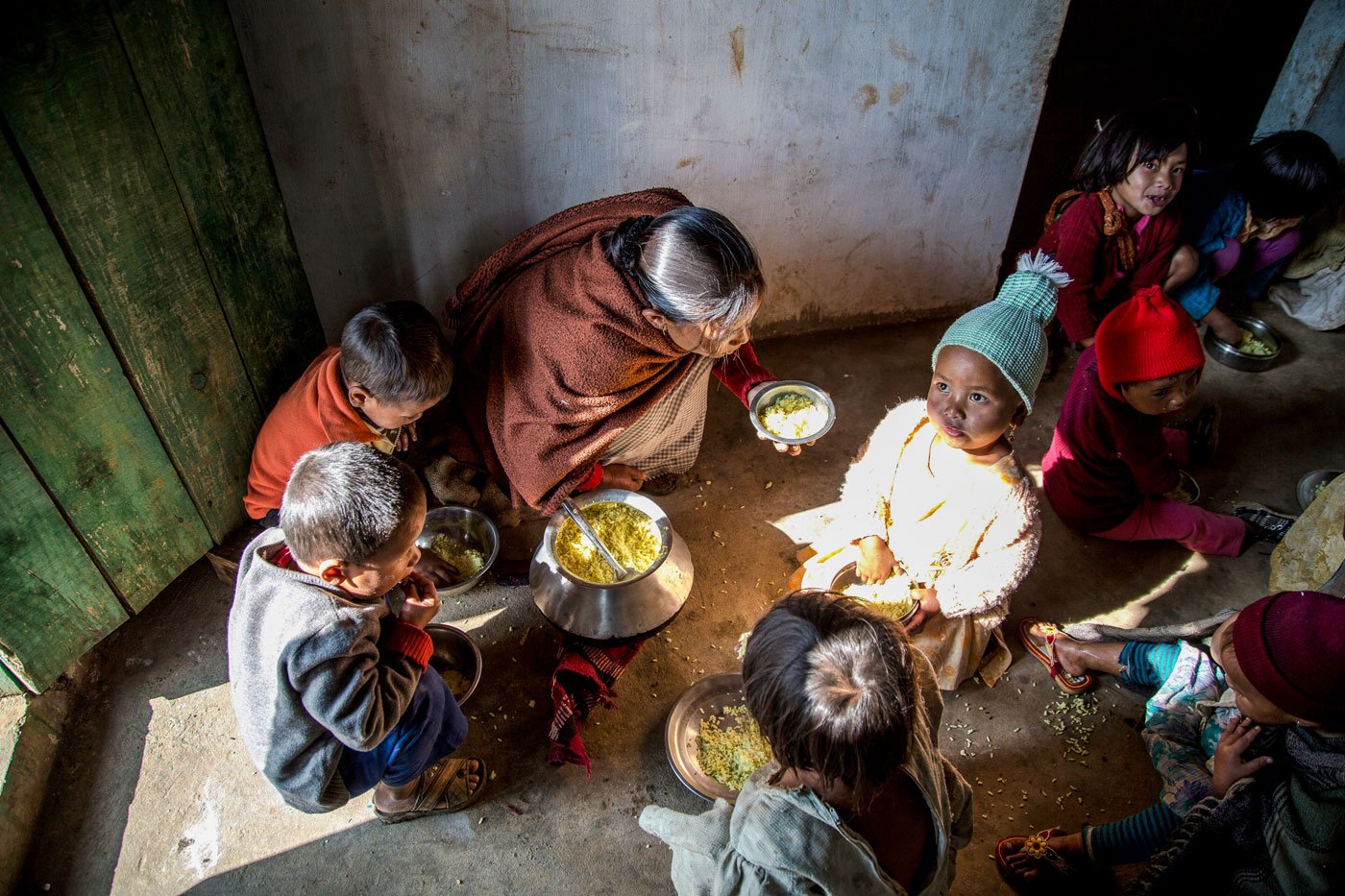
Teresa Shabong serves the food
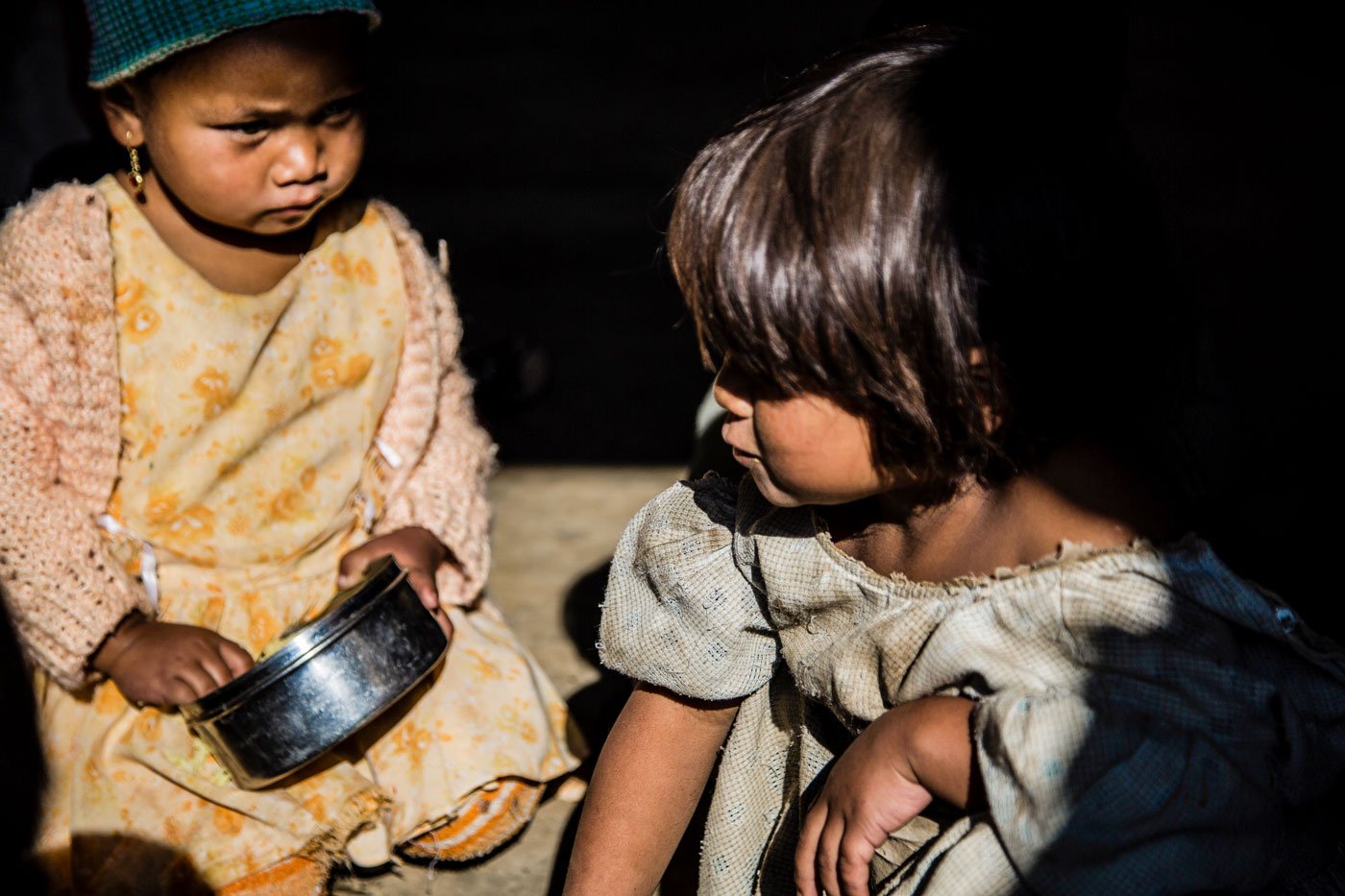
Kynja eats with her friend
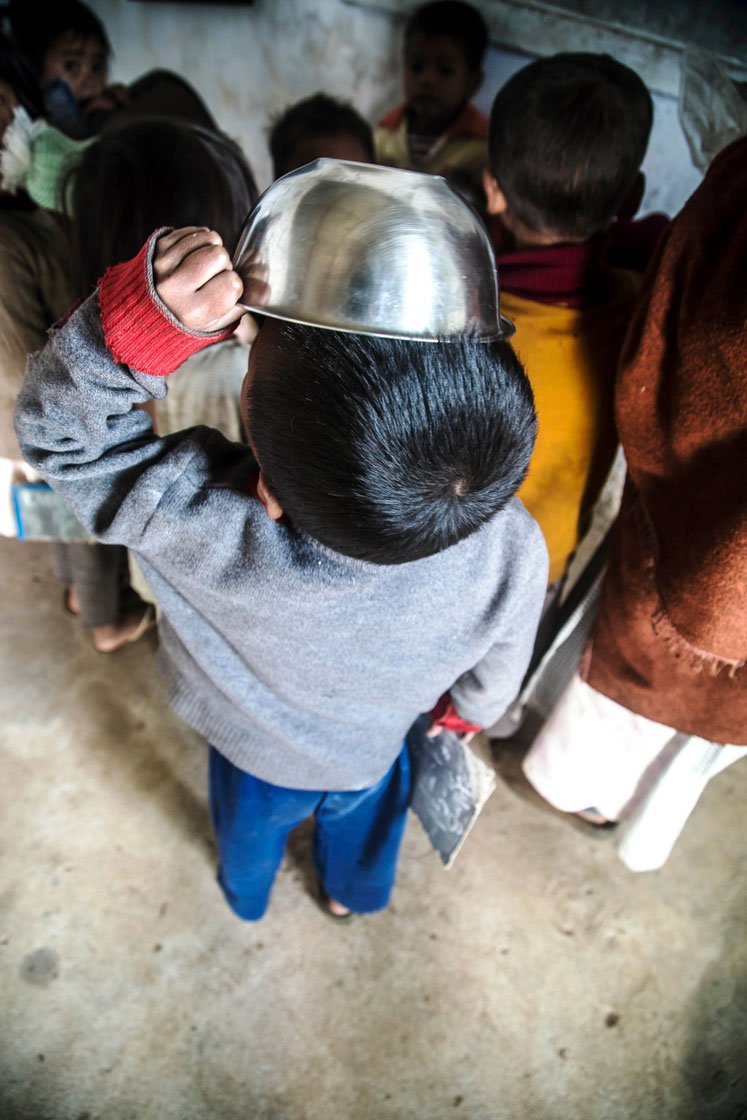
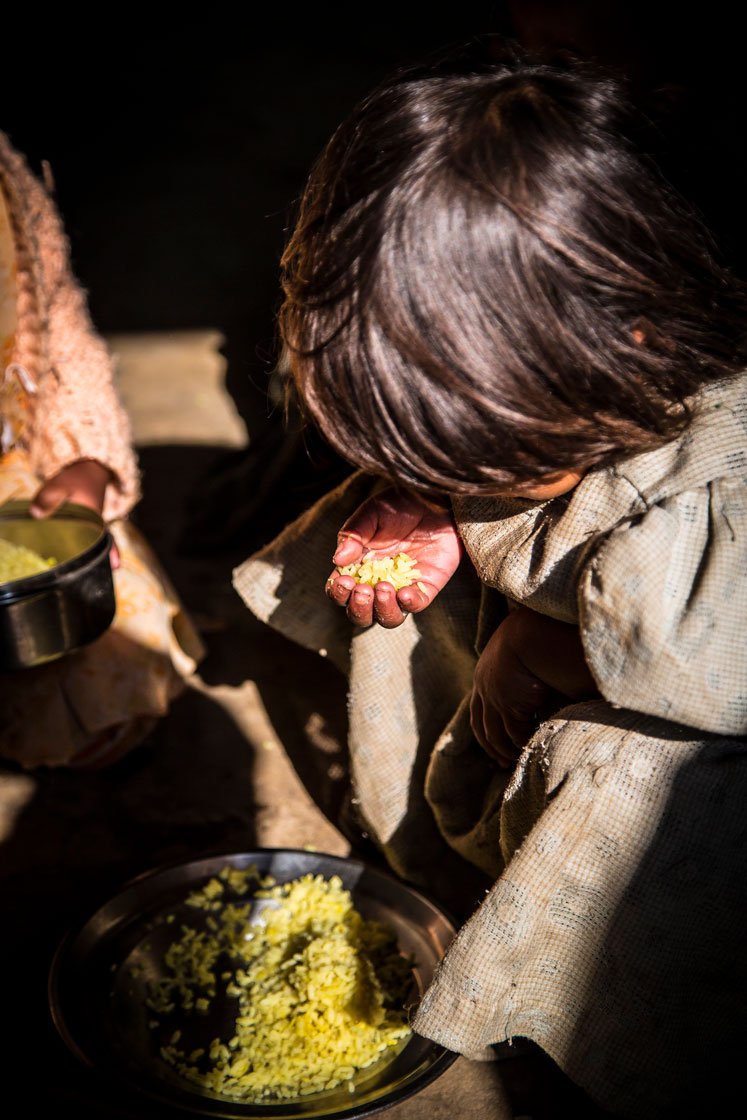
Mid-day meals are a huge incentive for children to attend the anganwadi. Kynja Babha (right) finishes her meal. Her day at the anganwadi has come to an end
